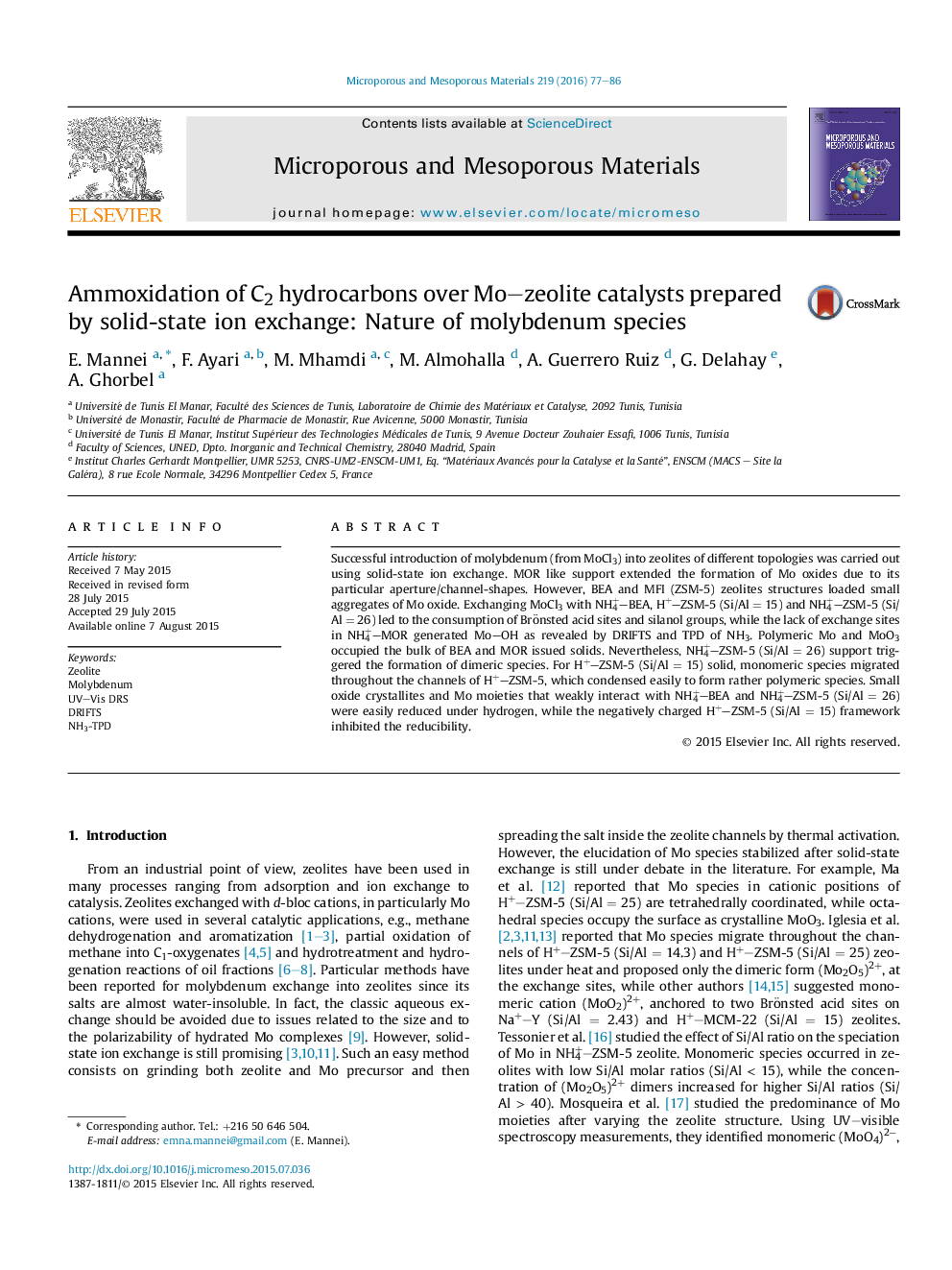| Article ID | Journal | Published Year | Pages | File Type |
|---|---|---|---|---|
| 72388 | Microporous and Mesoporous Materials | 2016 | 10 Pages |
•The solid-state exchange of MoCl3 into MFI, BEA, and MOR zeolites is efficient.•The intensity of dominant XRD peak enlightened the agglomeration state of MoO3.•The elucidation of Mo species in zeolites is possible by measuring band gap energy.•Mo contributes in the global acidity with MOR zeolite, having small apertures.
Successful introduction of molybdenum (from MoCl3) into zeolites of different topologies was carried out using solid-state ion exchange. MOR like support extended the formation of Mo oxides due to its particular aperture/channel-shapes. However, BEA and MFI (ZSM-5) zeolites structures loaded small aggregates of Mo oxide. Exchanging MoCl3 with NH4+–BEA, H+–ZSM-5 (Si/Al = 15) and NH4+–ZSM-5 (Si/Al = 26) led to the consumption of Brönsted acid sites and silanol groups, while the lack of exchange sites in NH4+–MOR generated Mo–OH as revealed by DRIFTS and TPD of NH3. Polymeric Mo and MoO3 occupied the bulk of BEA and MOR issued solids. Nevertheless, NH4+–ZSM-5 (Si/Al = 26) support triggered the formation of dimeric species. For H+–ZSM-5 (Si/Al = 15) solid, monomeric species migrated throughout the channels of H+–ZSM-5, which condensed easily to form rather polymeric species. Small oxide crystallites and Mo moieties that weakly interact with NH4+–BEA and NH4+–ZSM-5 (Si/Al = 26) were easily reduced under hydrogen, while the negatively charged H+–ZSM-5 (Si/Al = 15) framework inhibited the reducibility.
Graphical abstractFigure optionsDownload full-size imageDownload as PowerPoint slide
